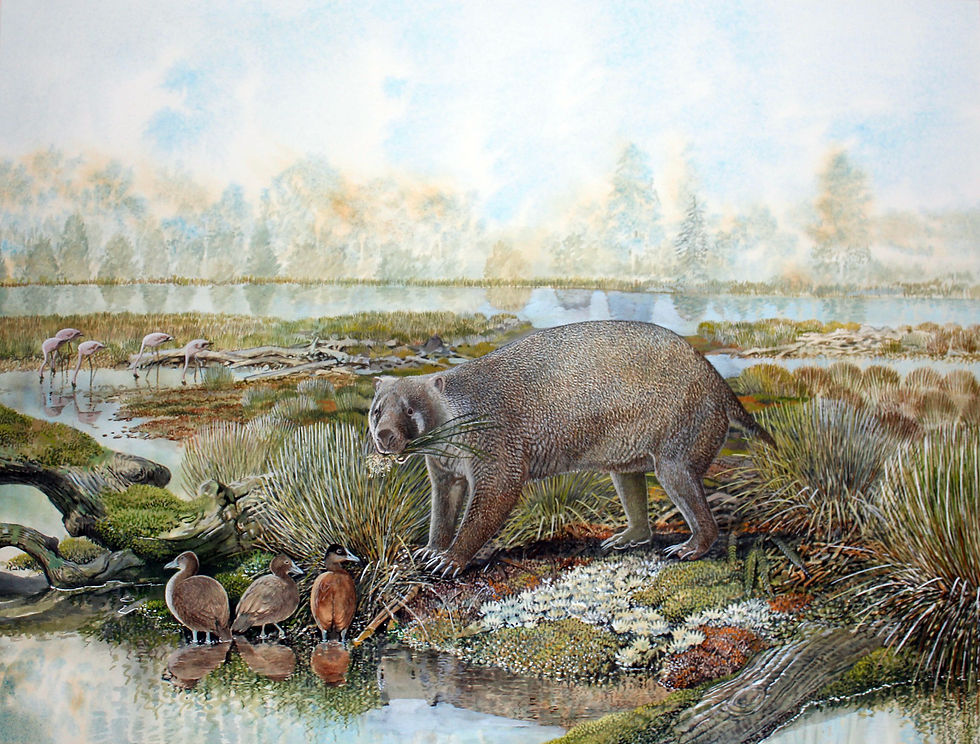Mortal Wombat: Giant Wombat Relative Is One of the Oldest Australian Fossils Found
- Poppy Simon
- Jun 25, 2020
- 1 min read
Updated: Sep 14, 2020
A new fossil discovery in Australia could help reveal the evolution of wombat burrowing behaviour.

Researchers from Australia and the UK have discovered a new species of Vombatiforme, the suborder that includes wombats and koalas, which they believe is also part of a new family. It has been named Mukupirna nambensis, from the words muku (bones) and pirna (big) of the Dieri and Malyangapa languages spoken in the surrounding area.
The skull and partial skeleton was found in the late Oligocene Namba formation of South Australia, in Lake Eyre Basin, and is believed to be 25-26 million years old. The new species is estimated to be between 143-171kg, ie. about five times bigger than living wombat species, and unlike its modern relatives, it looks like it was not a true burrower. Instead, adaptations on the skull and skeleton suggest that it had evolved to dig a little, probably for roots and tubers just under the surface, but was not able (and was too big) to actually burrow.
The authors suggest that this difference in behaviour, and the distinct size difference, mean that despite living wombats and koalas being fairly similar in terms of their ecology, it is likely that Vombatiformes used to be a much more diverse group of animals than their surviving members suggest, just like sloths.
Beck, R.M.D., Louys L., Brewer, P., et al. A new family of diprotodontian marsupials from the latest oligocene of Australia and the evolution of wombats, koalas, and their relatives (Vombatiformes). Sci Rep 10, 9741 (2020).




Comments